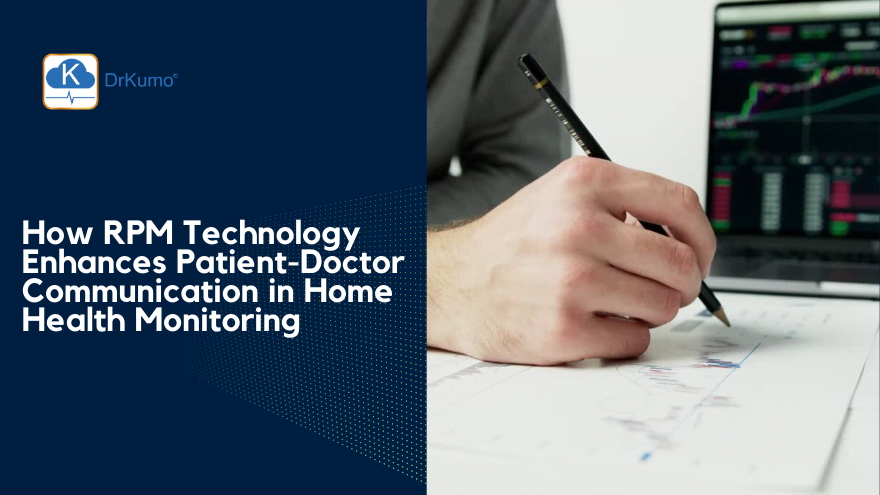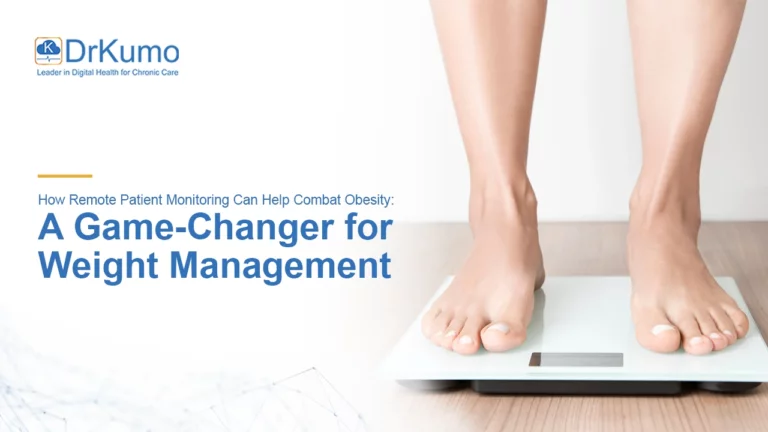The landscape of healthcare is undergoing a significant shift, with an increasing emphasis on patient-centered care models. Home health monitoring (HHM) has emerged as a powerful tool in this transformation, empowering patients to actively participate in managing their health from the comfort of their homes. However, the success of HHM hinges on effective communication between patients and doctors. This is where Remote Patient Monitoring (RPM) technology steps in, acting as a bridge that fosters a more collaborative and data-driven approach to care.
In this blog, we’ll look at how RPM technology enhances patient-doctor communication in HHM settings, creating a more streamlined and effective care experience for both parties.
Real-Time Feedback Loop: Bridging the Gap Between Office Visits
Traditional healthcare models often rely on infrequent office visits, which can leave significant gaps in a patient’s health data. RPM technology bridges this gap by allowing for continuous data collection between appointments. RPM utilizes a variety of user-friendly devices, such as blood pressure cuffs, weight scales, and glucometers, that transmit patient health data securely to a central platform accessible by both patients and providers.
This real-time data stream empowers doctors to gain a more comprehensive understanding of a patient’s health status, enabling them to identify trends and potential issues early on.
The research findings don’t lie: Remote monitoring utilizing implanted pulmonary artery pressure sensors significantly improved quality of life and reduced heart failure hospitalizations by 44% compared to standard care, according to a study published in The Lancet. Numerous studies have demonstrated that remote monitoring can detect early signs of heart failure decompensation, thereby reducing hospital readmissions. According to a 2023 Journal of the American College of Cardiology study, for remote monitoring to be effective, it requires accurate, reliable signals that can be acted upon through personalized algorithms.
Empowering Patients: Taking Ownership of Their Health Journey
One of the most significant advantages of RPM technology is its ability to empower patients. By providing them with user-friendly interfaces and educational resources, RPM allows patients to actively monitor their health metrics and gain valuable insights into their condition. This fosters a sense of ownership and accountability in patients, encouraging them to take a more proactive role in managing their health.
Furthermore, many RPM systems often come with built-in communication features, enabling patients to easily share their concerns or questions with their doctors in a timely manner. This two-way communication loop streamlines the process of addressing patient inquiries and alleviating anxieties, ultimately leading to a more informed and engaged patient population.
Building Stronger Relationships: Fostering Collaboration and Trust
The continuous flow of data facilitated by RPM technology lays the groundwork for more meaningful patient encounters. With a clearer picture of a patient’s health trajectory, doctors can tailor their communication strategies to address specific needs and concerns. This personalized approach fosters trust and strengthens the patient-doctor relationship.
A survey-based analysis of a multisite, multiregional RPM program revealed that 93.58% of participants were satisfied with the program and felt ready to graduate upon meeting the program’s goals. Moreover, 92.76% of participants indicated they would recommend RPM to others with similar conditions, demonstrating high levels of patient confidence and satisfaction with this care model.
Beyond the Basics: The Untapped Potential of RPM for Communication
While these aforementioned benefits represent a strong foundation for improved communication, RPM technology offers even more possibilities. For instance, RPM systems can be integrated with secure messaging platforms, allowing for asynchronous communication between patients and providers. This can be particularly valuable for addressing non-urgent questions or concerns, improving efficiency and reducing the burden on busy healthcare professionals.
Additionally, RPM data can be leveraged to personalize patient education materials. By analyzing a patient’s health data, the system can identify areas where the patient may require additional information or support. Targeted educational resources can then be delivered directly to the patient through the RPM platform, promoting a deeper understanding of their condition and treatment plan. This can significantly improve medication adherence and overall treatment outcomes.
Leveraging RPM for Improved Care Coordination in FQHCs
Federally Qualified Health Centers (FQHCs) play a vital role in providing comprehensive healthcare services to underserved communities. RPM technology can be a particularly valuable tool for FQHCs, as it allows for effective care coordination between different healthcare providers involved in a patient’s care plan. For instance, RPM data can be shared with specialists, nurses, and social workers, enabling them to stay informed about a patient’s health status and adjust their interventions accordingly. This collaborative approach ensures that patients receive seamless and coordinated care, regardless of their location.
Furthermore, RPM can be instrumental in addressing the social determinants of health (SDOH) that often impact patients served by FQHCs. By collecting data on factors such as food insecurity, housing stability, and access to transportation, RPM systems can identify patients who may be facing challenges that can negatively impact their health outcomes. With this information, FQHCs can connect patients with relevant social services and community resources, fostering a more holistic approach to patient care.
The Role of RPM in Chronic Disease Management
Chronic diseases, such as diabetes, heart failure, and COPD, are a significant burden on the healthcare system. RPM technology offers a powerful solution for managing these conditions effectively. By enabling continuous monitoring of key health indicators, RPM allows for early detection of potential complications and timely adjustments to treatment plans. This proactive approach can significantly improve patient outcomes and reduce healthcare costs.
Addressing Challenges and Ensuring Successful Implementation
While RPM technology offers a wealth of benefits for patient-doctor communication and chronic disease management, there are also challenges to consider for successful implementation. Here are some key considerations:
- Reimbursement: Ensuring adequate reimbursement for RPM services is crucial for widespread adoption by healthcare providers. CPT codes 99453, 99454, and 99457 under Medicare’s RPM program provide the necessary reimbursement framework, enabling FQHCs and other healthcare organizations to effectively integrate RPM and improve patient outcomes.
- Patient Engagement: The success of RPM hinges on patient engagement. Healthcare providers need to develop strategies to educate patients about the benefits of RPM and ensure they feel comfortable using the technology.
- Data Security and Privacy: Protecting patient data is paramount. Healthcare organizations implementing RPM programs must ensure robust data security measures are in place to comply with HIPAA regulations.
- Technical Infrastructure: Implementing RPM requires a reliable technical infrastructure. Healthcare providers need to invest in the necessary equipment and software to support RPM programs effectively.
DrKumo: Your Partner in Transforming Patient Care with RPM
As you’ve seen, RPM technology offers a wealth of potential for improving patient-doctor communication and overall healthcare delivery. But successfully implementing RPM requires the right tools and support. That’s where DrKumo Inc. comes in.
DrKumo is a leading healthcare technology company specializing in Remote Patient Monitoring (RPM) solutions. We are committed to empowering healthcare providers with the resources they need to thrive in the evolving healthcare landscape. Our comprehensive library of resources on RPM technology provides valuable insights on implementation strategies, best practices, and successful case studies.
We offer a user-friendly RPM platform that serves as a central hub for your RPM program. This platform allows you to receive and organize patient data in real-time, generate clinical and billing reports, and gain valuable insights into your patients’ health status. Additionally, DrKumo provides state-of-the-art hardware, including sensor-fusion blood pressure monitors, glucometers, pulse oximeters, and weighing scales. These devices seamlessly integrate with our platform, ensuring secure data transmission and ease of use for both patients and providers.
Takeaways
RPM technology holds immense potential to revolutionize patient-doctor communication in the realm of home health monitoring. By enabling real-time data collection, empowering patients, fostering collaboration, and improving care coordination, RPM paves the way for a more effective, patient-centered, and cost-efficient healthcare delivery system.
For healthcare providers and FQHCs seeking to enhance the patient experience and improve clinical outcomes, investing in RPM technology is a strategic decision with significant long-term benefits.
Ready to transform your practice with RPM? Contact DrKumo today for a free consultation and see how we can empower your patient care.








